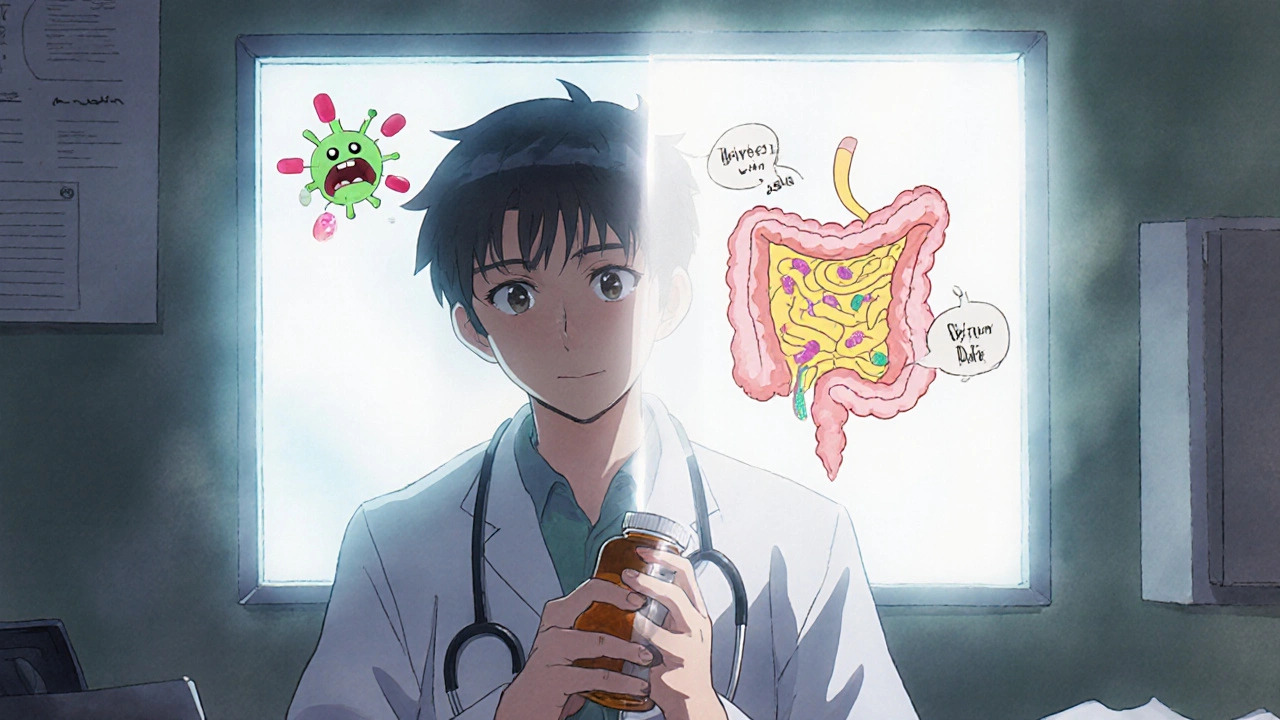It’s not uncommon to hear someone say, "I’m allergic to penicillin," or "I can’t take that statin-it gives me muscle pain." But here’s the thing: most people don’t actually have a drug allergy. In fact, only about 5 to 10% of reported drug reactions are true allergies. The rest? They’re side effects. And confusing the two can cost you more than just discomfort-it can cost you better treatment, higher bills, and even put your health at risk.
What’s the Real Difference?
A drug allergy is your immune system overreacting. It sees a medication as a threat-like a virus-and launches an attack. That means your body produces antibodies, releases histamine, and triggers symptoms like hives, swelling, trouble breathing, or even anaphylaxis. These reactions are unpredictable, can get worse with each exposure, and are not tied to the dose. Side effects? Those are built into the drug’s chemistry. They’re known, expected, and happen because of how the drug works in your body-not because your immune system is involved. For example, antibiotics like amoxicillin can cause diarrhea because they upset the balance of good bacteria in your gut. Statins can cause muscle aches because they interfere with muscle cell function. These reactions usually get better over time, or they can be managed with dose changes or extra meds.Timing Tells the Story
One of the clearest ways to tell them apart is when the reaction happens. True allergic reactions to penicillin or other beta-lactam antibiotics usually show up fast-within minutes to an hour. Think: sudden rash, itching, swelling of the lips or tongue, wheezing, or a drop in blood pressure. These are emergencies. If you’ve ever had a reaction this fast after taking a pill or getting a shot, it’s worth getting checked by an allergist. Side effects? They tend to creep in slowly. Nausea from antibiotics might start on day two. Dry cough from ACE inhibitors? That can take weeks. Muscle pain from statins? Often shows up after a few weeks of use. And here’s the kicker: side effects often fade as your body adjusts. An allergic reaction won’t. It’ll come back every time you take the drug.Delayed Reactions Are Tricky
Not all allergic reactions happen right away. Some, like DRESS syndrome (Drug Reaction with Eosinophilia and Systemic Symptoms), take 2 to 8 weeks to develop. You might get a widespread rash, fever, swollen lymph nodes, and organ inflammation. This is serious-up to 10% of cases can be fatal. But even here, it’s still an immune response, not a side effect. The key clue? You’ll have abnormal blood work-high eosinophils, atypical lymphocytes. Side effects don’t do that. And here’s a big one: many kids get a rash after taking amoxicillin because they have a virus like mono or Epstein-Barr. The rash looks scary, but it’s not an allergy. It’s a viral rash that happens to show up while they’re on antibiotics. Yet, 90% of these kids are wrongly labeled as penicillin-allergic for life.
What Gets Misdiagnosed the Most?
Penicillin and related antibiotics are the top culprits. About 80% of all documented drug allergies involve them. But here’s the shocker: up to 95% of people who think they’re allergic to penicillin can actually take it safely after proper testing. Other common mislabels:- Statins and muscle pain: Often called an allergy, but it’s a pharmacological side effect. Most people can tolerate lower doses or switch to another statin.
- NSAIDs and stomach upset: Common side effect, not allergy. True NSAID allergy is rare and usually involves hives or breathing problems.
- Sulfa drugs and rash: Many people say they’re allergic because they got a rash years ago. But true sulfa allergy is usually linked to sulfonamide antibiotics-not other sulfa-containing drugs like diuretics or diabetes meds.
- opioids and itching: Happens in 30-50% of users. It’s not an allergy-it’s histamine release from the drug itself. Antihistamines fix it without stopping the pain relief.
Why It Matters More Than You Think
Mislabeling a side effect as an allergy doesn’t just inconvenience you-it changes your medical care forever. If you’re labeled penicillin-allergic, doctors avoid the safest, most effective antibiotics. Instead, they give you broader-spectrum drugs like vancomycin or fluoroquinolones. That increases your risk of getting a dangerous infection like C. diff by 2.5 times. It also drives up costs-patients with mislabeled penicillin allergies spend an extra $1,025 per hospital stay on average. Across the U.S., this problem costs more than $1 billion a year. And it’s not just money. It’s longer hospital stays, more side effects from stronger drugs, and higher chances of antibiotic resistance.
What Should You Do?
If you’ve been told you have a drug allergy, ask yourself:- What exactly happened? (Rash? Swelling? Trouble breathing? Nausea?)
- When did it happen? (Within an hour? After a week?)
- Did you need emergency treatment?
- Have you taken the drug again since then?
How to Talk to Your Doctor
Don’t just say, “I’m allergic to penicillin.” Be specific:- “I got a rash two days after taking amoxicillin when I had the flu.”
- “I had stomach cramps and diarrhea with antibiotics, but no swelling or breathing trouble.”
- “I had a severe reaction once, but I’m not sure what it was.”
The Bottom Line
You don’t need to live with a label you might not deserve. Most people who think they have a drug allergy don’t. And that mislabeling puts them at risk-not just from the drug they’re avoiding, but from the ones they’re forced to take instead. If you’ve ever had a reaction to a medication, write it down. Note the timing, symptoms, and what happened after. Bring it to your next appointment. Ask for clarity. Get tested if it makes sense. Knowing the difference between a true allergy and a side effect isn’t just medical trivia-it’s a safety tool. And it could mean the difference between the right treatment… and the wrong one.Can you outgrow a drug allergy?
Yes, especially with penicillin. About 80% of people who had a true penicillin allergy in childhood lose it over time-even if they never got tested. That’s why it’s important to get reevaluated if you were labeled allergic as a kid. Skin testing or a supervised challenge can confirm whether you still react.
Is a rash always a sign of allergy?
No. Many rashes from medications are not allergic. Viral infections like mononucleosis or roseola can cause rashes that appear while you’re on antibiotics. These aren’t immune reactions-they’re coincidental. Doctors call them "viral exanthems." If you had a rash with no other symptoms like swelling, breathing trouble, or fever, it’s likely not an allergy.
Can side effects be dangerous?
Absolutely. While side effects aren’t immune reactions, some can be serious. For example, statins can cause rhabdomyolysis (muscle breakdown), and certain blood pressure drugs can lead to kidney damage. The difference? These are predictable, dose-related, and often show up in blood tests. If you notice muscle pain, dark urine, or swelling, tell your doctor right away-even if you think it’s "just a side effect."
What if I had anaphylaxis once? Do I have to avoid the drug forever?
If you’ve had a true anaphylactic reaction, you should avoid that drug and carry an epinephrine auto-injector. But even then, you should see an allergist. Some drug allergies, like to penicillin, can be retested under controlled conditions. In rare cases, desensitization protocols can allow you to safely take the drug if it’s absolutely needed-like for a life-threatening infection.
How do I know if my doctor is taking my allergy claim seriously?
A good doctor will ask for details: What happened? When? How did it resolve? Did you need emergency care? If your chart just says "Penicillin allergy" without specifics, ask them to update it. Vague labels like "allergic" or "bad reaction" are dangerous. Use exact terms: "hives after IV penicillin," "anaphylaxis after amoxicillin," or "nausea and diarrhea with sulfa antibiotics." Precision saves lives.
Are there tests for drug allergies besides skin tests?
Yes. For penicillin, blood tests for IgE antibodies exist, but they’re less reliable than skin testing. For some drugs like carbamazepine, genetic testing (HLA-B*15:02) can predict severe reactions in certain populations. For others, like vancomycin or aspirin, there are no reliable blood or skin tests-so doctors rely on detailed history and sometimes a controlled oral challenge under supervision. Testing isn’t available for every drug, but it’s improving.


Author
Mike Clayton
As a pharmaceutical expert, I am passionate about researching and developing new medications to improve people's lives. With my extensive knowledge in the field, I enjoy writing articles and sharing insights on various diseases and their treatments. My goal is to educate the public on the importance of understanding the medications they take and how they can contribute to their overall well-being. I am constantly striving to stay up-to-date with the latest advancements in pharmaceuticals and share that knowledge with others. Through my writing, I hope to bridge the gap between science and the general public, making complex topics more accessible and easy to understand.